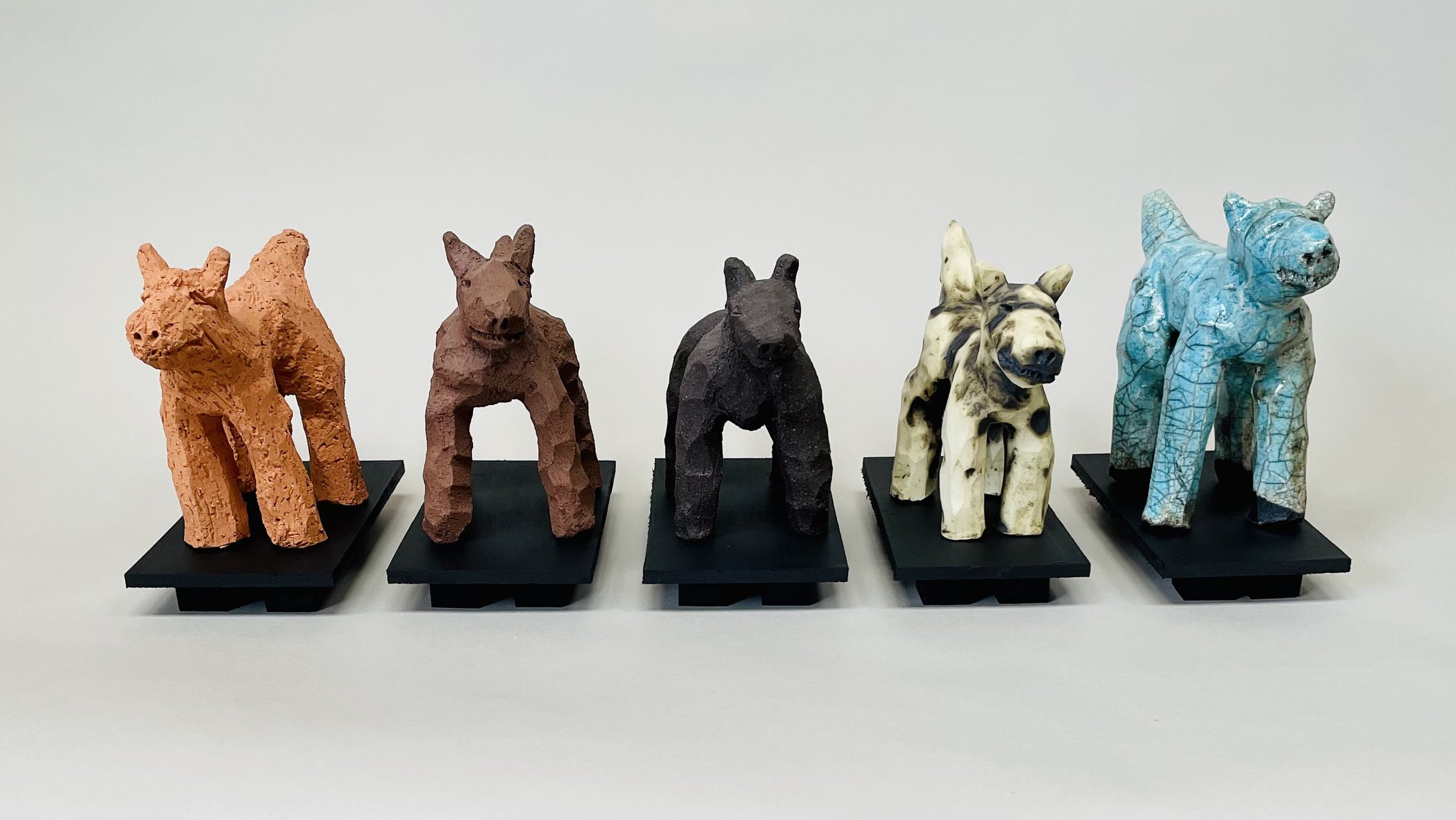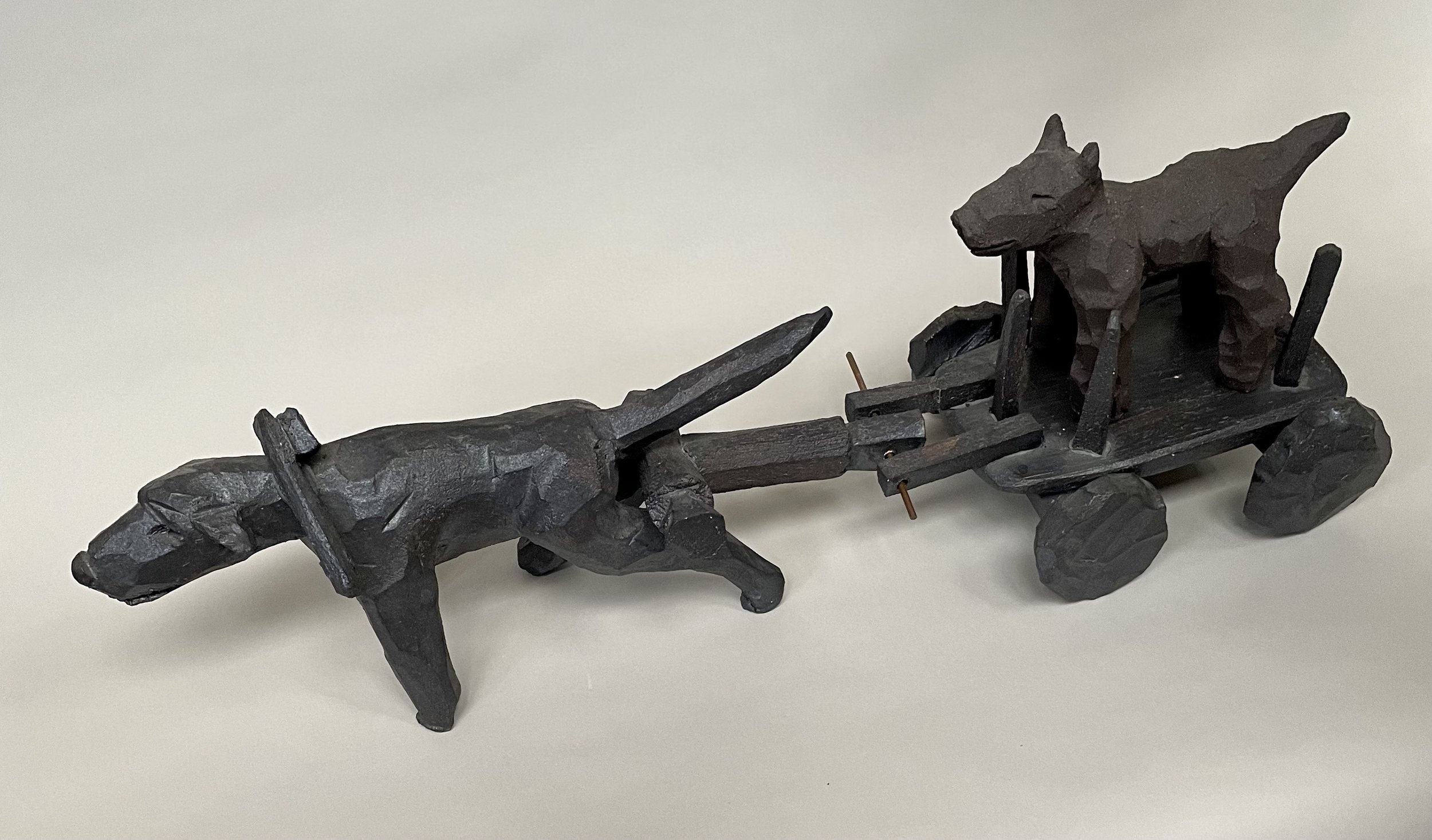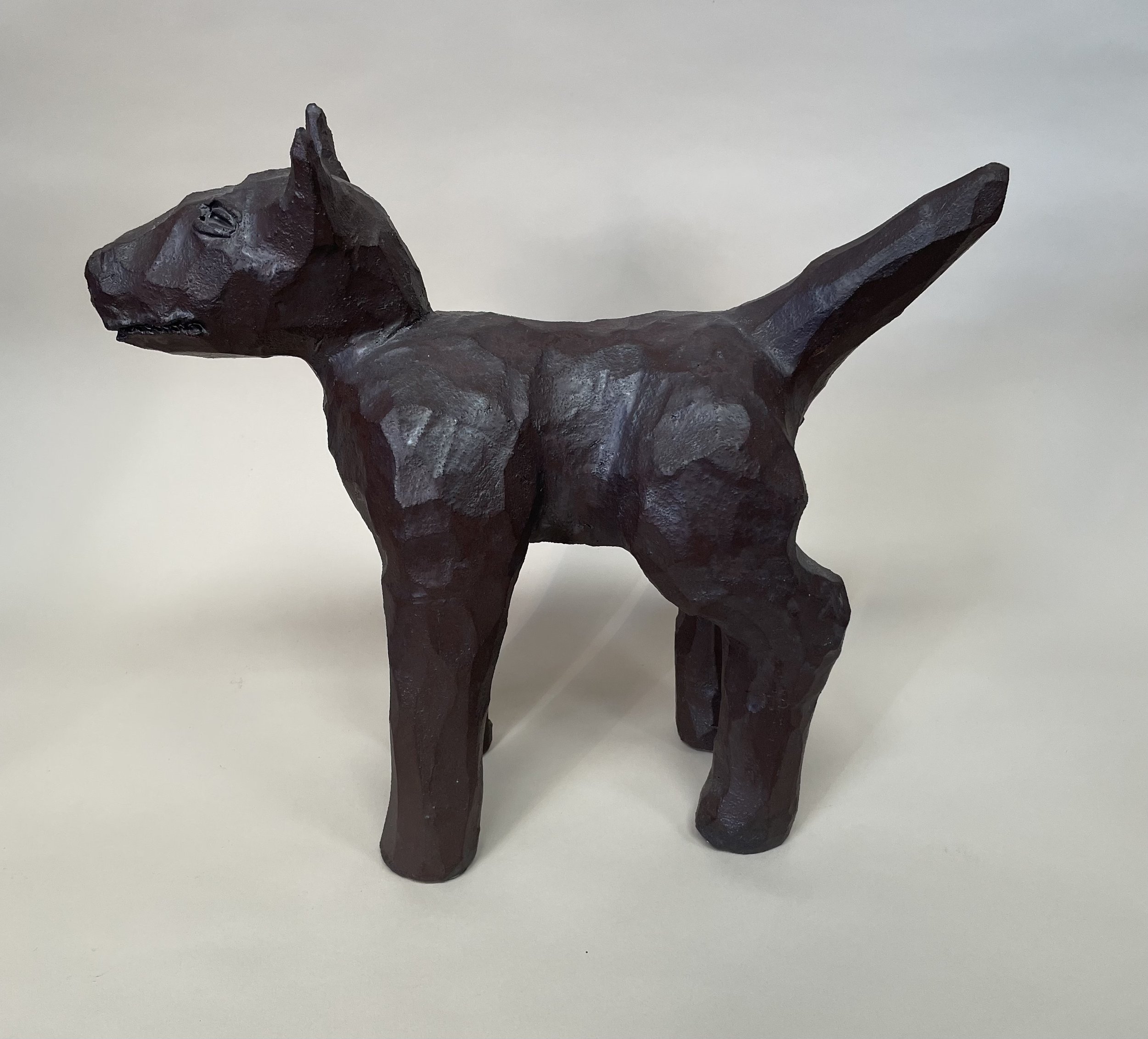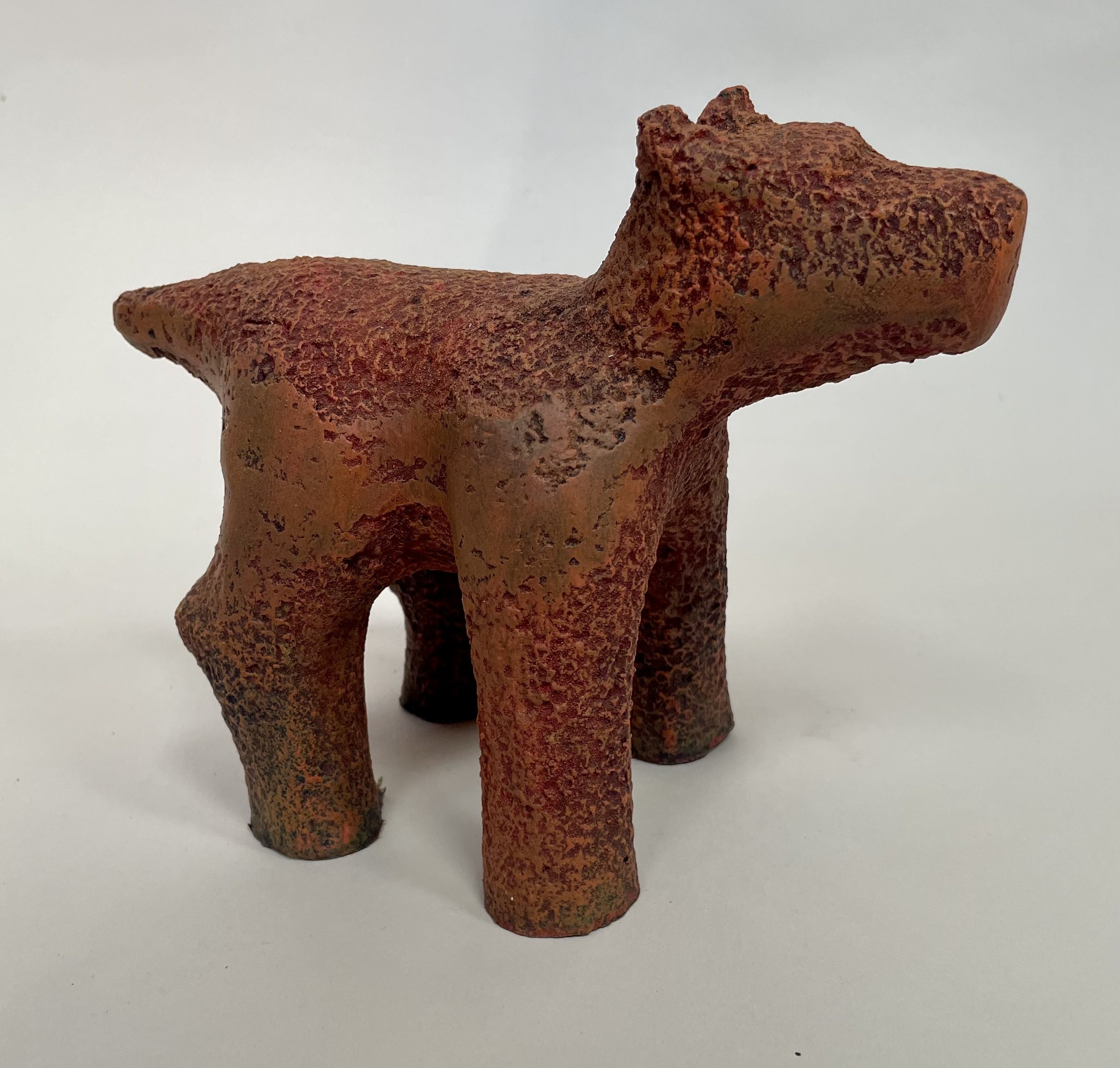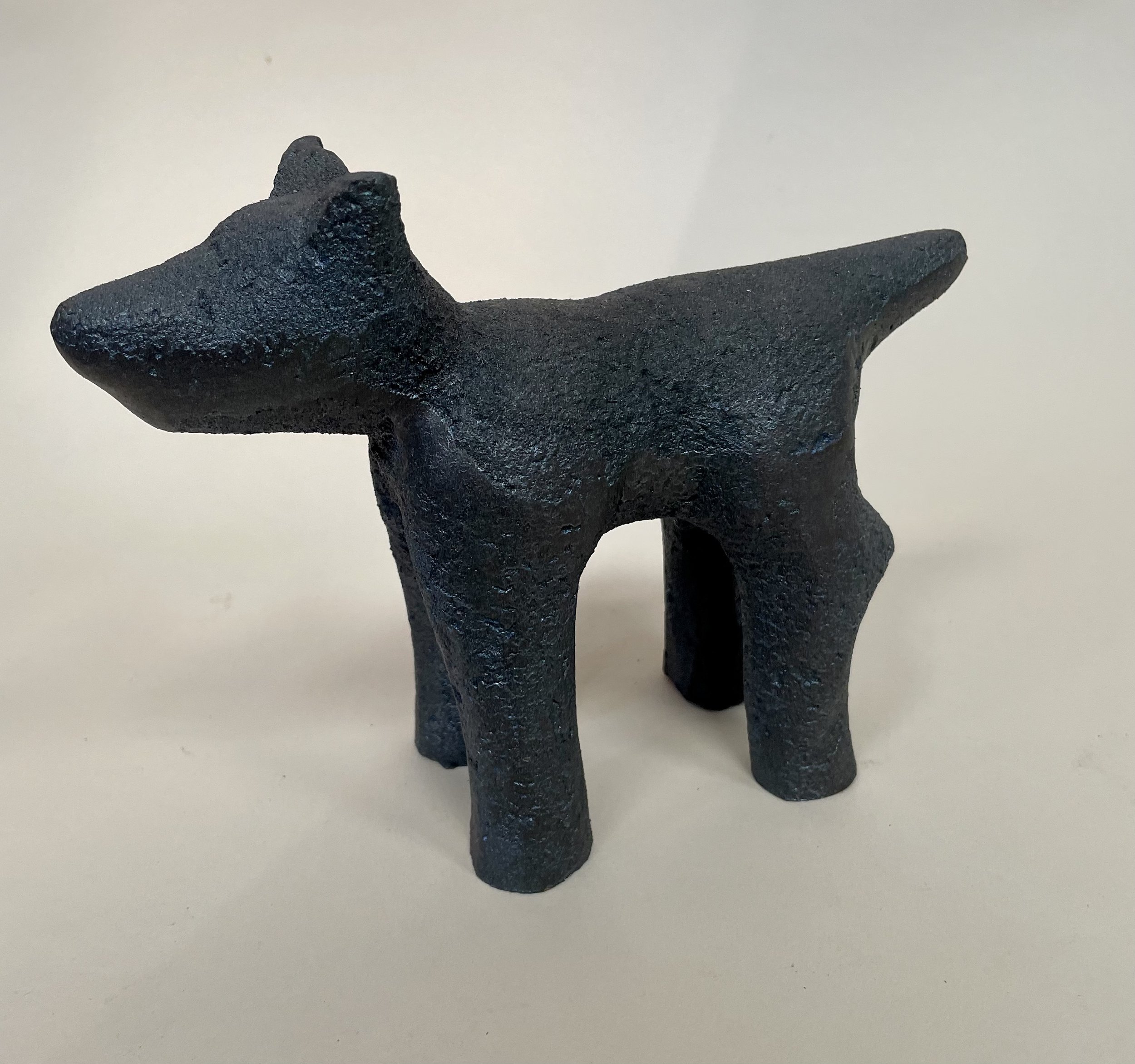January 12 - March 17, 2024
Jeanie & Bill Wyatt Gallery
Reception Saturday, January 13, 5-7pm
In his new exhibition, "Make the Dog Bark,” sculptor Greg Reuter invites viewers to explore their emotions through his many hand-sculpted depictions of man’s best friend.
Featured in the Jeanie & Bill Wyatt Gallery,"Make the Dog Bark” will be on display and available for collection Jan. 12–March 17, 2024. A public reception with Reuter will be held on Saturday, January 13, from 5–7 p.m. to officially celebrate the show. Admission is free and open to the public.
Greg Reuter received his BFA from California College of Arts and Crafts, earned an MFA in sculpture and ceramics from the University of Hawaii, and in 1978 joined the faculty of Texas A&M University-Corpus Christi (TAMU-CC) teaching ceramics and sculpture. He exhibits work nationally and internationally; numerous private and public art collections hold his work, and he has lectured in Mexico, Germany, Japan, and the United States.
During his years living in South Texas, Greg has created and collaborated on several public art pieces, including five for the city of Corpus Christi and two for TAMU-CC. For his first public art commission in Corpus Christi in 1988, Greg collaborated with ceramic artist William Wilhelmi to create a mosaic tile floor in the city hall rotunda. In 2006, Greg collaborated with the Ken King Foundry in Houston to produce the bronze The Year in Sand, commissioned by the Harte Research Institute at TAMU-CC.
After retiring from teaching in 2018, Greg established a full-time studio practice. He continues to pursue projects and make work that allows him to express his vision and share messages of conservation, loyalty, and love with his community.
“The desires to grow, learn, and discover fuel my artistic process. Over time my sculpture making evolved as I developed bodies of work in different mediums. Throughout my career, I have considered the role of the sublime in my art, and I strive to make work that creates a sense of wonder and beauty in the viewer regardless of cultural background or lived experiences. “ says Reuter
“My earliest work relied on clay as a medium and took the form of both functional and sculptural ceramics. For years I built on this foundational mode and medium of work by incorporating new processes and materials into my practice. Using wood, found objects, iron, bronze, and 3D printing I have been able to further explore the ideas of the sublime that started with me throwing pots. “
“I aim for my sculptures to draw people in with a feeling of visual curiosity that leads to conceptual discovery or reflection. While the specific subjects of my work change from series to series, I typically return to the three primary themes of conservation, loyalty, and love. The context of my work is conveyed to the viewer through recognizable iconography, intentional choice of materials, and universal storytelling methods.”
“I frequently use the images of birds within my work as a way of exploring the theme of conservation, specifically maintaining habitats along migratory pathways. The power of flight endows birds with enviable freedom of locomotion that renders human borders irrelevant. While birds represent the wild and enigmatic side of nature in my work, dogs reflect the unambiguous qualities of love and loyalty. Inspired by my own pets and the iconic look of a particular stray dog I saw while travelling in Mexico, I often use the image of a dog as an accessible entry point to bring viewers into deeper explorations of complex emotions. In recent years I have juxtaposed birds and dogs in my work to explore the relationship between the wild and the domestic.”
“When designing a public sculpture, I focus on choosing elements that create a functional and sublime space. Beyond simply placing a sculpture from an existing series in a communal space, I incorporate the site-specific details of a place into my choice of imagery and form. An example is my sculpture The Year in Sand, which sits in front of the Harte Research Institute for Gulf of Mexico Studies. It references the research done in the nearby building with cast bronze impressions of sand textures from the beaches in the area. Additionally, my sculptures in such settings go beyond being purely decorative and instead provide a function or utility for viewers as well. For instance, two of my public commissions serve as mosaic tile floors that encourage the flow of foot traffic while also creating an artistic focal point within the architecture of the buildings.”
